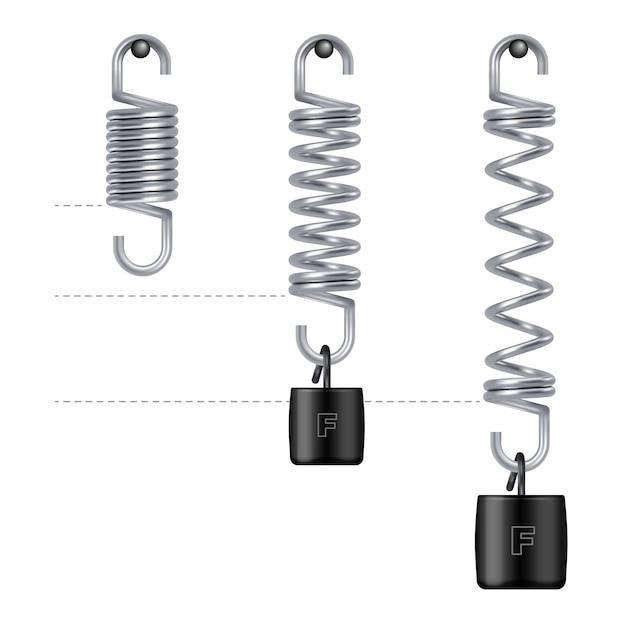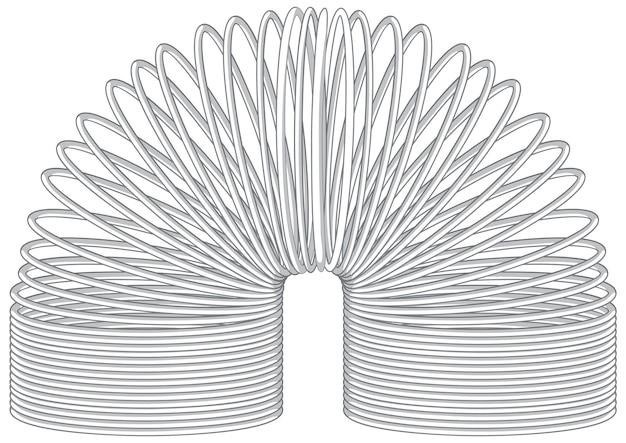Helicoil Size Guide⁚ A Comprehensive Overview
This comprehensive guide delves into the intricacies of Helicoil sizes, providing a detailed understanding of their application, selection, and installation. It explores the different types of Helicoil sizes, including insert sizes, tap sizes, and drill sizes, and offers a clear explanation of how to choose the right size for your specific needs. Furthermore, it outlines the installation process, ensuring a successful and durable thread repair solution.
Introduction
In the world of mechanical engineering and manufacturing, thread repair is a common challenge. Stripped or damaged threads can render a part unusable, leading to costly downtime and replacement. This is where Helicoils come in, offering a reliable and effective solution for restoring thread integrity. Helicoils are precision-engineered wire thread inserts that are inserted into damaged or worn threads, creating a new, stronger, and more durable thread.
This guide serves as a comprehensive resource for understanding and utilizing Helicoils effectively. It provides a detailed overview of Helicoil sizes, covering the different types, their specifications, and how to choose the right size for your specific application. Understanding Helicoil sizes is crucial for ensuring a successful and lasting thread repair, and this guide aims to equip you with the knowledge and tools necessary for optimal results.
Whether you are a seasoned mechanic, a DIY enthusiast, or a manufacturing professional, this guide will provide valuable insights into the world of Helicoils and empower you to confidently tackle thread repair challenges.
What is a Helicoil?
A Helicoil, also known as a wire thread insert or coil insert, is a precision-engineered component used to repair damaged or stripped threads in a variety of materials, including metals, plastics, and composites. It consists of a precisely formed coil of wire with a specific thread profile. The coil is designed to be inserted into a pre-drilled and tapped hole, effectively creating a new, stronger, and more durable thread.
Helicoils are typically made from high-strength materials like stainless steel, spring steel, or Inconel, offering superior resistance to wear, corrosion, and fatigue. They are available in a wide range of sizes and thread pitches, allowing for compatibility with a wide range of applications. The key advantage of using Helicoils is that they create a thread that is significantly stronger and more durable than the original thread, enhancing the strength and lifespan of the repaired part.
Helicoils are widely used in various industries, including automotive, aerospace, manufacturing, and construction. They are a common solution for thread repair in situations where conventional methods, such as tapping or reaming, are not feasible or effective. Helicoils offer a reliable and cost-effective way to restore thread integrity, ensuring the continued functionality of components and assemblies.
Benefits of Using Helicoils
Helicoils offer a multitude of benefits over conventional thread repair methods, making them a preferred solution for a wide range of applications. Their unique design and construction provide enhanced thread strength, durability, and reliability, contributing to improved performance and longevity of components and assemblies.
One of the primary benefits of Helicoils is their ability to significantly increase thread strength. The coiled wire construction creates a thread that is significantly stronger than the original thread, making the repaired part more resistant to stripping and wear. This enhanced strength is particularly beneficial in high-stress applications where thread failure could lead to catastrophic consequences.
Helicoils also provide excellent resistance to corrosion. The materials used in Helicoil manufacturing, such as stainless steel and Inconel, are highly resistant to rust and other forms of corrosion. This makes them ideal for use in environments where exposure to moisture, chemicals, or other corrosive agents is a concern. Their corrosion resistance ensures long-term performance and reliability, even in harsh conditions.
Another key benefit of Helicoils is their ability to enhance thread life. The durable and resilient thread created by Helicoils significantly extends the lifespan of the repaired part, reducing the need for frequent replacements and minimizing downtime; This is particularly advantageous in applications where frequent disassembly and reassembly are required, as Helicoils provide a more robust and lasting thread solution.
Understanding Helicoil Sizes
Helicoils are available in a wide range of sizes to accommodate various thread repair applications. Understanding these sizes is crucial for selecting the appropriate Helicoil for a specific repair job. There are three key size parameters to consider⁚ Helicoil insert size, Helicoil tap size, and Helicoil drill size. Each size plays a vital role in ensuring a successful and durable repair.
The Helicoil insert size refers to the diameter of the coiled wire insert that will be installed in the damaged thread. This size directly corresponds to the original thread size that needs to be repaired. A chart is typically used to match the correct Helicoil insert size to the original thread size.
The Helicoil tap size is the diameter of the tap used to create the new thread in the damaged hole. The tap size is slightly larger than the drill size to provide clearance for the coiled wire insert. A specific tap size is recommended for each Helicoil insert size to ensure proper thread engagement and a secure fit.
The Helicoil drill size is the diameter of the drill bit used to create the initial hole in the damaged part. This size is slightly smaller than the Helicoil insert size to accommodate the thickness of the coiled wire insert. The drill size is critical in ensuring a snug fit for the Helicoil insert and preventing it from becoming loose or dislodged over time.
Helicoil Insert Sizes
Helicoil insert sizes are crucial for selecting the appropriate insert for your thread repair application. They are typically denoted by a combination of numbers and letters, representing the original thread size and type. For instance, a Helicoil insert size of 2-56 indicates a repair for a 2-56 UNC thread.
The Helicoil insert size directly corresponds to the original thread size that needs to be repaired. It’s essential to select an insert size that perfectly matches the original thread size for a secure and durable repair. A mismatch in sizes can lead to loose threads, weakened connections, and potential failure.
Helicoil inserts are available in a wide range of sizes to accommodate various thread repair applications. They are commonly categorized into three main series⁚ Unified Coarse (UNC), Unified Fine (UNF), and Metric (M). Each series has a specific range of sizes, allowing for precise thread repair across different applications.
The Helicoil insert size is a critical parameter in selecting the right insert for your repair needs. By choosing the correct size, you can ensure a secure and durable repair, restoring the original strength and integrity of the threaded connection.
Helicoil Tap Sizes
Helicoil tap sizes play a vital role in the installation process, ensuring a precise and compatible thread for the insert. These taps are designed to create a slightly larger thread than the original thread, accommodating the Helicoil insert. The size of the Helicoil tap is directly related to the Helicoil insert size, with a clear relationship between the two.
Choosing the right Helicoil tap size is crucial for a successful installation. A tap that is too small will result in a loose fit, while a tap that is too large will create a thread that is too tight, potentially damaging the insert or the material.
Helicoil taps are available in a variety of sizes to match the various Helicoil insert sizes. They are typically categorized into the same series as the inserts – UNC, UNF, and Metric (M). Each series has a specific range of tap sizes, ensuring compatibility with the corresponding insert sizes.
The Helicoil tap size is a critical element in the installation process, directly impacting the fit and performance of the insert. Choosing the correct size ensures a secure and durable repair, restoring the original strength and integrity of the threaded connection.
Helicoil Drill Sizes
The drill size for Helicoil installation is a crucial factor in ensuring a successful thread repair. It determines the diameter of the hole that will accommodate the Helicoil insert and the tap. The drill size must be carefully selected to provide the correct fit for the insert, allowing for a snug and secure installation.
Helicoil drill sizes are often found in charts that correspond to the specific insert sizes and thread types. These charts provide a reference for selecting the appropriate drill size for each application. The drill size is typically slightly smaller than the Helicoil insert size to allow for the thread to be tapped into the hole.
Selecting the wrong drill size can lead to various issues. If the hole is too small, the tap may not be able to create the correct thread, resulting in a loose fit for the insert. Conversely, if the hole is too large, the insert may not have sufficient engagement with the thread, leading to a weakened connection.
Therefore, it is vital to carefully choose the correct Helicoil drill size to ensure a secure and durable repair. Consulting a chart or a reliable resource for recommended drill sizes is essential for a successful thread repair using Helicoil inserts.

Helicoil Size Chart
A Helicoil size chart is an indispensable tool for navigating the world of thread repair. It serves as a comprehensive guide, outlining the various sizes of Helicoil inserts, taps, and drill bits available for different thread types and applications. This chart simplifies the process of choosing the appropriate components for a successful thread repair.
Typically, Helicoil size charts are organized by thread size, thread type, and material. They display the corresponding insert size, tap size, and drill size for each thread. This information allows users to quickly identify the correct components for their specific needs.

For instance, a chart might list the insert size, tap size, and drill size for a 1/4-20 UNC thread. This information is essential for ensuring that the chosen components are compatible and will produce a secure and durable thread repair.
Helicoil size charts are available from manufacturers and online resources. They provide a valuable reference for professionals and DIY enthusiasts involved in thread repair. By using a Helicoil size chart, users can confidently select the correct components for their specific needs, ensuring a successful and lasting thread repair.
How to Choose the Right Helicoil Size
Selecting the correct Helicoil size is crucial for achieving a successful and durable thread repair. A wrong size can lead to a loose fit, thread damage, or even failure of the repair. To ensure a perfect match, carefully consider the following factors⁚
Original Thread Size⁚ Start by determining the size of the damaged thread. This information is typically found on the original bolt or tap. Note both the thread diameter and the thread pitch (threads per inch or millimeters).
Material⁚ The material of the workpiece plays a role in choosing the correct Helicoil size. Different materials require different drill sizes and tap sizes to achieve the desired thread engagement.
Helicoil Size Chart⁚ Consult a Helicoil size chart to find the recommended insert size, tap size, and drill size for the specific thread size and material. Charts are readily available from manufacturers and online resources.
Application⁚ Consider the application of the thread repair. Heavy-duty applications might require a larger Helicoil size for greater strength and durability.
Thread Engagement⁚ Ensure sufficient thread engagement. The Helicoil insert should engage a minimum number of threads to ensure proper strength and prevent the insert from backing out.
By carefully considering these factors and referencing a Helicoil size chart, you can choose the right size for your specific needs, ensuring a successful and long-lasting thread repair.
Helicoil Installation Process
Installing a Helicoil involves several steps, each crucial for achieving a secure and durable repair. The process generally involves preparing the damaged hole, threading the hole, and inserting the Helicoil. Proper tools and techniques are essential for a successful installation. Here’s a step-by-step guide⁚
Prepare the Damaged Hole⁚ Clean the damaged hole thoroughly, removing any debris or burrs. Use a drill bit of the appropriate size to enlarge the hole, ensuring it’s clean and free of imperfections.
Tap the Hole⁚ Use a Helicoil tap of the correct size to cut new threads in the prepared hole. This step creates a precise and clean thread for the Helicoil to engage with.
Install the Helicoil⁚ Select the appropriate Helicoil insert and ensure it’s compatible with the tap size. Use a Helicoil installation tool to insert the Helicoil into the tapped hole. The tool typically guides the Helicoil into the hole and ensures a smooth and even installation.
Break Off the Tang⁚ Helicoils with a tang are designed to prevent the insert from backing out during installation. After the Helicoil is fully installed, use a tang break-off tool to remove the tang. This leaves a flush and clean thread.
Final Inspection⁚ Inspect the installed Helicoil for proper engagement and ensure it’s securely seated. If necessary, make minor adjustments to ensure a perfect fit.
Following this process carefully, you can install Helicoils confidently and effectively, restoring damaged threads and ensuring their long-lasting performance.
Understanding Helicoil sizes is essential for successful thread repair. This guide has provided a comprehensive overview of the subject, encompassing the various types of Helicoil sizes, the factors influencing their selection, and the installation process. By carefully considering the specific application, choosing the appropriate Helicoil size, and adhering to the installation guidelines, you can ensure a durable and reliable thread repair.
Helicoils offer numerous benefits, including increased thread strength, enhanced corrosion resistance, and the ability to repair damaged threads in various materials. They are widely used in various industries, from automotive and aerospace to manufacturing and construction.
Remember, choosing the correct Helicoil size is crucial for optimal performance and longevity. By utilizing the information presented in this guide and consulting with manufacturers or suppliers when needed, you can make informed decisions and achieve successful thread repair outcomes.
Whether you’re a professional mechanic, an engineer, or a DIY enthusiast, understanding Helicoil sizes empowers you to restore damaged threads and ensure the integrity of your projects.
